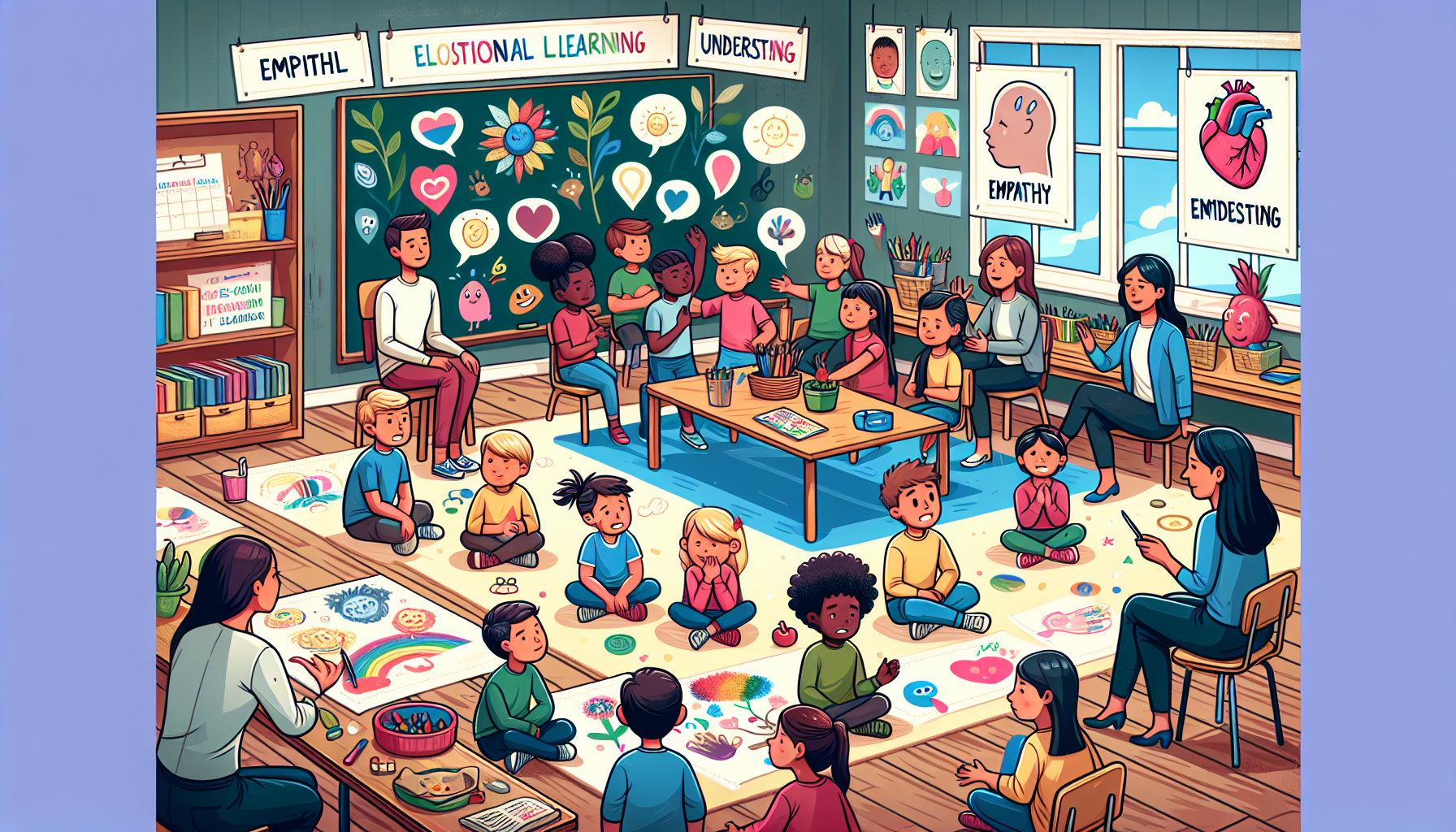Intervention strategies or what are intervention strategies are planned approaches to tackle specific challenges and improve outcomes in education. This article covers different methods, academic and behavioral strategies to help students succeed.
An intervention strategy is a structured approach for task teams to achieve specific objectives within their recovery and reconstruction plans. This includes defining objectives, evaluating scenarios, and making informed decisions based on cost-efficiency and expected outcomes, particularly in the context of improving school facilities after disasters.
Quick Facts
Intervention strategies in education require planning and collaboration among stakeholders to achieve academic success and build student confidence.
Interventions are student specific, using ongoing assessment, data collection and evidence based approaches to create inclusive learning environments.
Family and technology based interventions support systems, increase engagement and address academic and emotional needs of students.
Assess students to identify their individual strengths and needs in order to tailor educational support and implement diverse instructional strategies.
What Are Intervention Strategies

Intervention strategies are programs run by school facilities to achieve specific outcomes in educational settings. They promote academic success and build student confidence, they are essential in educational environments. A good implementation strategy is key to these programs.
Planning and coordination among stakeholders, government agencies, health providers, other health care professionals, and community organizations is crucial for effective intervention strategies. Success depends on a broad legal and institutional framework to ensure all is well coordinated and aligned to overall goals.
Technical expertise and collaboration among different entities is key to lead activities and avoid duplication of effort. Understanding the different types and components of intervention strategies allows educators and policymakers to tailor their approach to their student population.
Components of Effective Interventions
Effective interventions start with an assessment to identify each learner’s strengths and weaknesses, essential to develop individualized plans. Using data from summative assessments and observations helps educators understand a student’s learning needs and tailor interventions accordingly. This is the foundation of a multi tiered system of support (MTSS).
Interventions should be done in short regular sessions to maintain effectiveness over time. Staff must be trained and know what is expected to ensure implementation is successful. Coordination mechanisms must be in place to avoid duplication of effort and ensure alignment to overall goals. Tracking student progress is crucial to adapt interventions based on observed outcomes.
Ongoing data collection and evaluation is critical to assess the effectiveness of implemented interventions. Choosing the right data collection method beforehand helps to evaluate over time. Focusing on evidence based approaches and individualizing interventions allows educators to create inclusive learning environments.
Behavioral Interventions for Students
Behavioral interventions support students by promoting positive behaviors and reducing negative ones. Positive reinforcement which rewards desired behaviors is a key component. Building positive relationships with strategies like 2×10 can increase student engagement and emotional safety. Involving family members can increase effectiveness by providing additional support and reinforcing positive behaviors at home. Behavioral interventions can also positively impact a student’s academic performance by addressing behavioral issues that may hinder learning.
A good behavior intervention plan (BIP) addresses the underlying issues of behavior based on functional assessment results. Focusing on clear routines, breaks for self regulation and silent signals helps educators create an environment that promotes student engagement and motivation.
Let’s look at two specific behavioral interventions: Positive Behavior Support and Self-Monitoring Techniques.
Positive Behavior Support
Positive Behavior Support (PBS) promotes positive behaviors and reduces negative ones in educational settings. Behavior contracts which is part of PBS outlines expectations and consequences, so students know what is expected of them. Combining positive reinforcement with behavior contracts creates an environment that promotes student engagement and responsibility.
Positive reinforcement effectively rewards desired behaviors by students meeting specific expectations. This helps manage classroom behavior and creates a positive inclusive learning environment where students feel motivated to achieve.
Self-Monitoring Techniques
Self-monitoring techniques allows students to manage their own behavior by reflecting and adjusting their actions. These techniques promotes self regulation and accountability. Regularly checking their behavior helps students identify areas for improvement and make changes, resulting in better academic and behavior outcomes.
Including self-monitoring techniques in school interventions addresses behavior issues and enhances student learning overall. It helps them take ownership of their actions and engage more in their learning.
Social-Emotional Learning (SEL) and Mental Health Strategies

Social-emotional learning (SEL) strategies develops social-emotional skills and prioritizes student emotional wellbeing. These strategies helps students understand their emotions, make responsible choices and build positive relationships. Positive Behavior Interventions and Supports (PBIS) are often used within a multi tiered system to improve student behavior by creating an environment that supports.
SEL strategies manages emotions and develops communication skills, social skills and overall emotional health. Including SEL in the curriculum allows educators to create a whole learning environment that supports academic and personal growth.
Let’s look at two SEL strategies: Goal-Setting Activities and Relationship Building.
Goal-Setting Activities
Goal-setting activities is a key part of SEL strategies, students set and achieve personal and academic goals. One effective activity is WOOP (Wish, Outcome, Obstacle, Plan) which guides students through a structured process of goal-setting and achievement. This helps students focus on their goals and teaches them how to overcome obstacles and stay motivated.
Including goal-setting activities in school interventions helps students develop life skills such as emotional management, interpersonal relationships and responsible decision making. These skills are essential for student overall success and wellbeing.
Relationship Building
Building relationships with students is a key part of effective SEL strategies. The 2×10 intervention involves spending 2 minutes for 10 consecutive school days building a positive relationship with one student. This creates a safe and supportive environment where students feel comfortable to ask for help and guidance.
Positive relationships improves student engagement and motivation. Regular communication and understanding between teachers and students creates a caring learning environment that supports academic and personal growth, so students can succeed.
Faith-Based Interventions

Faith-based interventions are based on religious beliefs and practices to promote health and prevent disease. These interventions are used in low and middle-income countries (LMICs). Faith-based rehab programs for example have a success rate of 75% compared to traditional rehab programs with 50%.
The Faith-Based Integration Tool (FIAT) helps to assess and develop the integration of spiritual practices into health topics. Including faith-based interventions in school programs allows educators to provide whole support that addresses the spiritual and practical needs of students.
Let’s look at church leaders and spiritual activities in more detail.
Role of Church Leaders
Church leaders play a key part in recovery by providing guidance, emotional support and encouragement to individuals with addiction. Their involvement can impact an individual’s recovery journey by providing spiritual and practical support. Building community and relational health support helps individuals feel connected and supported throughout their recovery.
Training church leaders as community health workers enables them to provide trusted advice on health matters and be a bridge between the health system and congregation. This training helps them to support individuals in need and contribute to the overall wellbeing of the community.
Benefits of Spiritual Activities
Participation in spiritual activities has been shown to have higher rates of abstinence from drugs and alcohol and quicker recovery from relapse. It also improves mental health outcomes including reduced anxiety and depression.
Including spiritual activities in intervention strategies provides whole support that addresses mental and spiritual wellbeing. This approach creates a more comprehensive and effective intervention plan that promotes overall health and recovery.
Family-Centered Interventions

Family centered interventions recognize the role of families in student success. Engaging families as partners in the intervention process creates a cycle of positive reinforcement between the student, family, and school, which positively impacts a student’s academic performance. Making phone calls home and involving families in their child’s education helps to build a support system.
Including family centered interventions in school programs allows educators to create a more supportive and inclusive learning environment. Here are two family centered interventions: Family Therapy Sessions and Home Visits.
Family Therapy Sessions
Family therapy addresses both behavioral and mental health issues by involving family dynamics in the therapy process. This type of therapy can address specific mental health issues affecting one family member while involving the whole family, a whole family approach.
Including family therapy sessions in intervention strategies provides whole support that addresses the needs of the whole family. This approach creates a supportive environment that supports students wellbeing and success.
Home Visits
Home visits involve educators or specialists visiting students in their homes to get a better understanding of their environment. These visits are a bridge between school and home, creating collaboration and support for students. Seeing students in their natural environment helps educators identify external factors that impact learning.
Information from home visits may include family dynamics, local resources and individual student challenges. Including home visits in intervention strategies means more targeted and effective support for students and ultimately better outcomes for students.
Technology in Interventions

Educational technology means interventions can be more targeted to individual student needs. Technology in interventions means better engagement and personalization of learning. Digital tools mean educators can increase student engagement and participation in learning activities.
Educational technology means personalization of learning to individual student needs. For example using games in maths instruction engages students and reinforces key maths skills through play.
Let’s look at online counseling services in more detail.
Online Counseling Services
Online counseling services means mental health support is accessible wherever you are. These services often include various communication methods such as video calls, chat and messaging to cater for different preferences. This means individuals can access support more easily in remote or disadvantaged areas.
Including online counseling services in intervention strategies means educators and mental health professionals can provide timely and effective support. Students have access to the resources they need to succeed academically and personally.
Intervention Plans
Intervention strategies need clear outcomes based on individual student needs. A good strategy means clear objectives, priorities, expected outcomes and timeline for implementation. Interventions should be evidence based to address any gaps in current provision.
Monitoring and evaluating intervention progress is key to seeing if they are working and making adjustments. A good intervention plan means specific behaviors to be targeted and all stakeholders are on the same page.
Goals and Objectives
Clear goals and objectives are essential in any intervention plan. Clear goals give direction and focus so all stakeholders in the intervention know what the outcomes are and can work together to achieve them. Measurable objectives means progress can be tracked and adjustments can be made when needed and the intervention stays on track to its goals.
Implementation of goals and objectives requires consistent communication, regular monitoring of progress and flexibility to adjust strategies as needed. This means the intervention stays responsive to the changing needs of the students and continues to support their academic and overall development.
Monitoring Student Progress
Progress monitoring is key to seeing if intervention strategies are working. Continuous data collection and analysis means educators can make informed decisions about adjustments to the intervention plans so they stay effective and responsive to individual student needs.
Adjustments to intervention plans should be based on individual progress and emerging needs. The aim of continuous monitoring is to ensure interventions are working so students can achieve academic success and improve overall performance.
Conclusion
In summary intervention strategies are a valuable tool in education and beyond. They support students by addressing their individual needs and academic success. From behavior and social-emotional interventions to faith based and family centered approaches each strategy has its own benefits that contribute to a whole of student support.
By using these strategies effectively educators, parents and community leaders can create environments that support student engagement, motivation and success. Remember the journey to academic success is a team effort that requires hard work, flexibility and continuous improvement.
FAQs
What are intervention strategies?
Intervention strategies are systematic approaches to address specific issues and achieve specific outcomes often used in educational settings. They support student success and individual needs.
How do behavior interventions support students?
Behavior interventions support students by promoting positive behaviors and reducing negative ones, using strategies like positive reinforcement and behavior contracts. This means a better learning environment.
What are the benefits of social-emotional learning (SEL) strategies?
Social-emotional learning (SEL) strategies means emotional well-being, positive relationships and students with skills to make good choices and ultimately academic success.
How do faith based interventions differ from traditional interventions?
Faith based interventions differ from traditional interventions by including spiritual beliefs and practices in the support process which can improve recovery success and mental health outcomes. This whole of person approach addresses emotional and spiritual needs.
Why are family centered interventions important in education?
Family centered interventions are important in education as they involve families in the intervention process, create an environment that supports student success and addresses behavior and mental health issues. This means better outcomes for students and family engagement in education.

